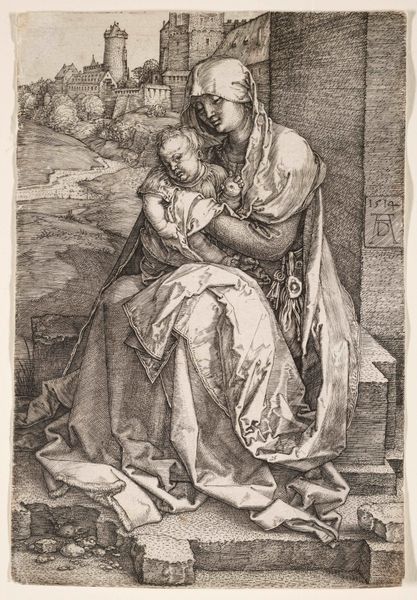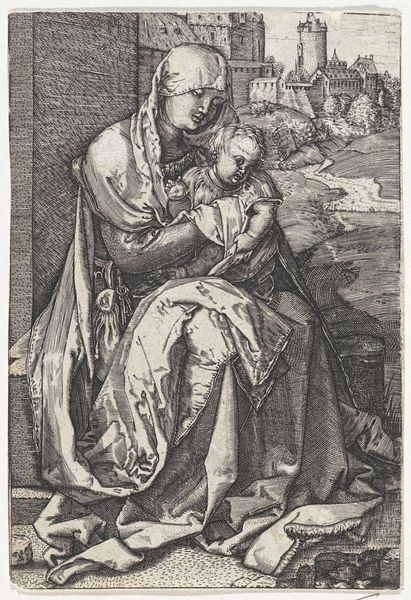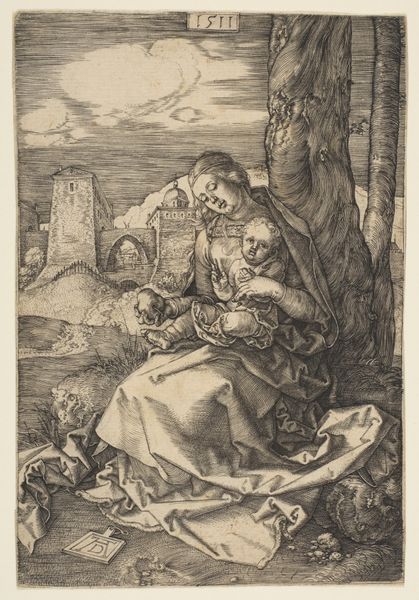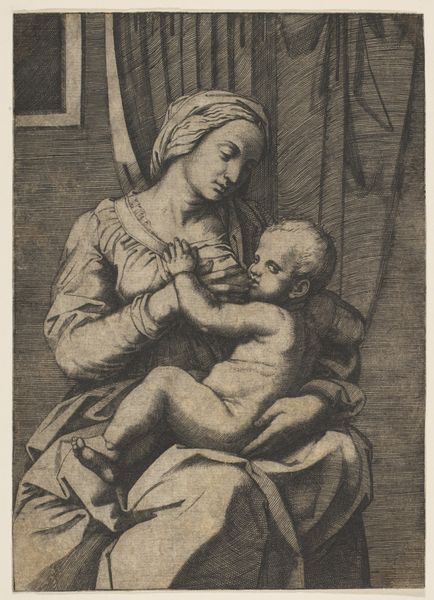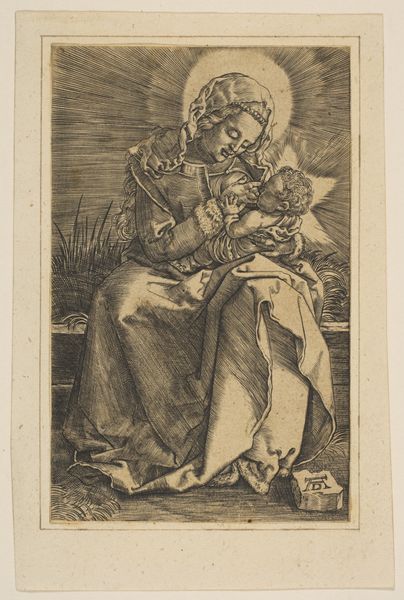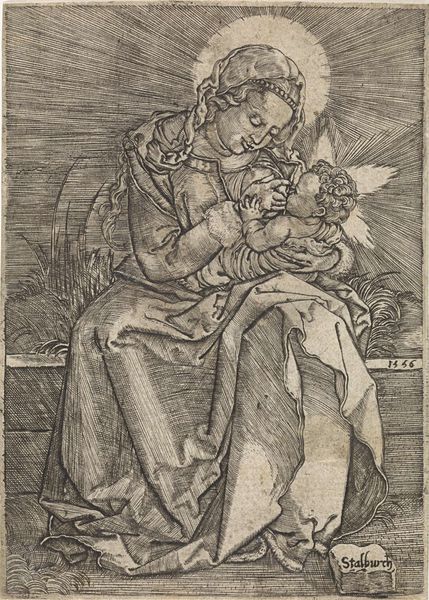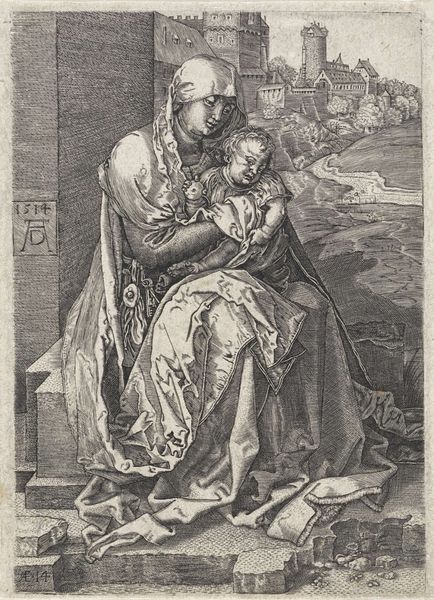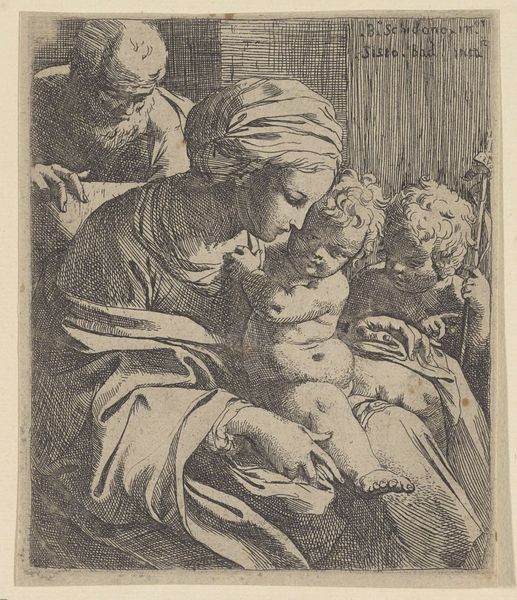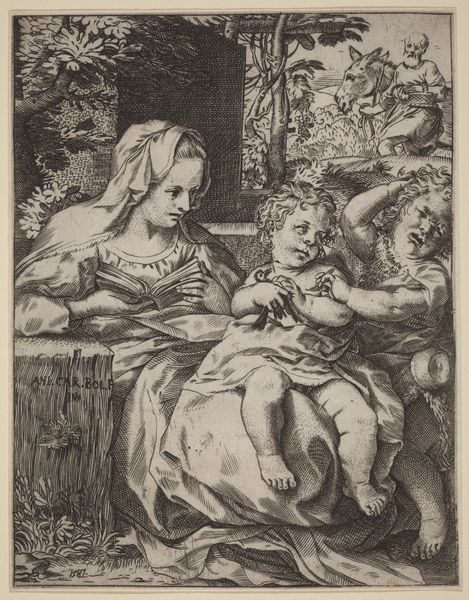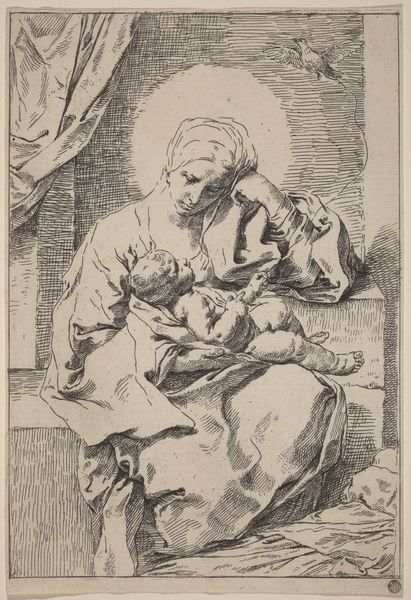
Virgin and Child Seated by the Wall (reverse copy) 1485 - 1600
0:00
0:00
drawing, print, engraving
#
portrait
#
drawing
# print
#
figuration
#
madonna
#
child
#
history-painting
#
northern-renaissance
#
engraving
Dimensions: Sheet: 5 11/16 × 3 7/8 in. (14.4 × 9.8 cm)
Copyright: Public Domain
This reverse copy of Albrecht Dürer’s “Virgin and Child Seated by the Wall” was created using engraving, a printmaking technique popular in 16th-century Europe. Dürer lived in a time of great religious and social upheaval, as the Protestant Reformation challenged the authority of the Catholic Church. His images of the Virgin Mary reflect a shift in religious sentiment, emphasizing her humanity and accessibility rather than her divine status. Here, the Virgin is depicted as a humble mother, seated outside a city wall, perhaps symbolizing the protective role of the church. The landscape behind the Virgin and Child is very interesting. Nuremberg, Durer's birthplace was a city in which art was actively patronized by the merchant class. The walled cityscape and the clothing of the Virgin might be an allegory of the city and the church. By studying Dürer's prints and drawings alongside historical sources, we can gain a deeper understanding of the complex social and religious forces that shaped his art. Ultimately, the meaning of this image lies not just in its aesthetic qualities, but in its relationship to the world in which it was created.
Comments
No comments
Be the first to comment and join the conversation on the ultimate creative platform.

